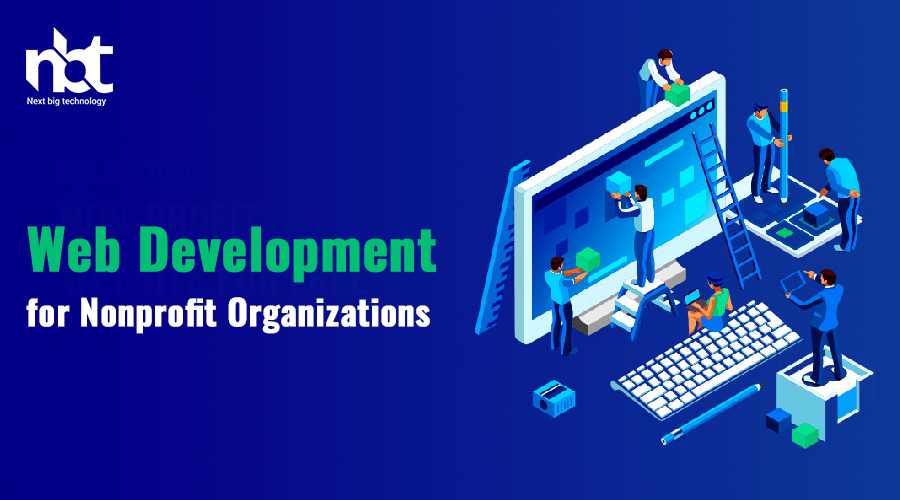Table of Contents
1. Introduction
Nonprofit organizations play a vital role in society, addressing various social, environmental, and humanitarian issues. To amplify their impact, nonprofits need to harness the power of the internet through well-crafted websites. A robust web presence allows them to connect with supporters, donors, and volunteers on a global scale.
2. Understanding the Unique Needs of Nonprofits

Nonprofits have distinct requirements when it comes to web development. They need to convey their mission and values clearly, showcase their projects and initiatives, and engage their audience emotionally. Understanding these unique needs is the first step towards creating an effective website.
3. Setting Clear Goals
Before diving into web development, nonprofits must define their goals. Are they looking to raise funds, increase awareness, recruit volunteers, or all of the above? Setting clear objectives will guide the entire web development process.
4. Choosing the Right Content Management System (CMS)

Selecting the right CMS is crucial. WordPress, Joomla, and Drupal are popular choices, offering flexibility and scalability. A user-friendly CMS empowers nonprofits to update content easily and keep their websites fresh.
5. Designing a User-Friendly Website
A clean and intuitive design is essential. Nonprofit websites should be easy to navigate, with a clear call to action. Visitors should quickly understand the organization’s mission and how they can get involved.
6. Incorporating Donation and Fundraising Features

Online fundraising is a lifeline for many nonprofits. Integrating secure donation and fundraising features is a must. Make it effortless for supporters to contribute to the cause.
7. Search Engine Optimization (SEO)
SEO helps nonprofit websites rank higher on search engines, increasing their visibility. Use relevant keywords, create high-quality content, and optimize meta tags to improve organic traffic.
8. Mobile Responsiveness
With the majority of internet users on mobile devices, nonprofits must ensure their websites are mobile-responsive. A mobile-friendly design guarantees a seamless experience for all visitors.
9. Security and Privacy
Nonprofit organizations often handle sensitive donor information. Robust security measures and privacy policies are essential to protect this data and build trust with supporters.
10. Integrating Social Media

Social media integration amplifies the reach of nonprofit websites. Shareable content and easy access to social platforms encourage visitors to become advocates for the cause.
11. Regular Maintenance and Updates
Websites require ongoing maintenance. Regular updates, security patches, and content refreshing are vital to keeping the site relevant and engaging.
12. Measuring Success and Analytics
Nonprofits should use analytics tools to track website performance. Metrics like traffic, conversion rates, and engagement levels help gauge the effectiveness of their online efforts.
13. Budgeting for Your Website

Creating and maintaining a website comes with costs. Nonprofits should allocate a budget for web development, hosting, and ongoing updates to ensure sustainability.
14. Engaging Your Target Audience
Engagement goes beyond donations. Nonprofits should build a community of supporters through blogs, newsletters, and interactive features that foster a sense of belonging.
15. Conclusion
In conclusion, web development for nonprofit organizations is a multifaceted endeavor that requires careful planning and execution. A well-structured website can elevate an organization’s mission, drive fundraising efforts, and expand its reach to make a meaningful impact on the world.
FAQs
1. How can a nonprofit create an engaging website on a limited budget?
Creating an engaging website on a limited budget is possible by using open-source CMS platforms, leveraging volunteer expertise, and focusing on content that resonates with the audience.
2. What role does storytelling play in nonprofit web development?
Storytelling is crucial as it connects emotionally with visitors. Sharing stories of impact and personal experiences can inspire support and engagement.
3. How can nonprofits ensure the security of donor data on their websites?
Nonprofits should invest in secure hosting, SSL certificates, and regular security audits to protect donor data and maintain trust.
4. What metrics should nonprofits track to measure the success of their website?
Key metrics include website traffic, conversion rates, bounce rates, and engagement levels on social media and blogs.
5. How often should a nonprofit update its website content?
Regular content updates are recommended, ideally at least once a month, to keep the website fresh and engaging for visitors.
Thanks for reading our post “Web Development for Nonprofit Organizations ”. Please connect with us to know more about Web Development.










